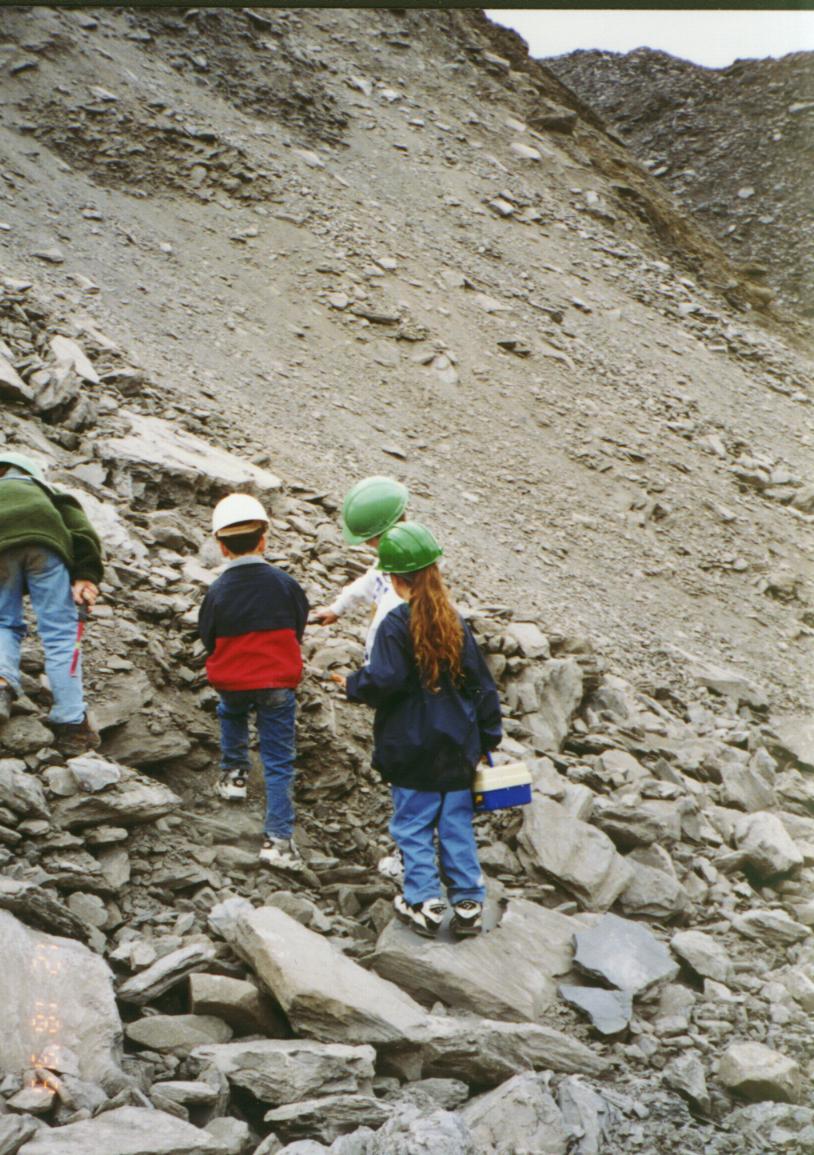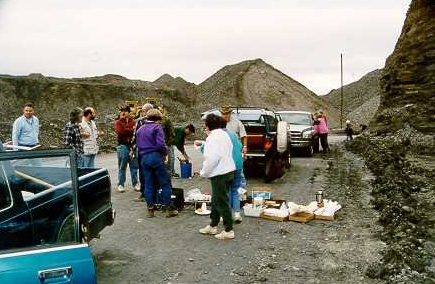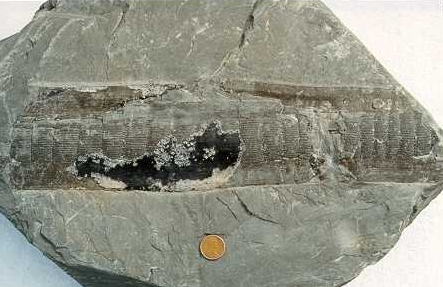|
During this field trip, the BPS had the pleasure of returning to the Cedrum Surface Coal Mine near Jasper in Walker County, Alabama. Although we had visited this mine only a few months ago (see BPS field trip report for July 24, 1999), there was a sense of urgency connected with our latest visit. The Drummond Company, which operates the mine, was going to shut down operations on December 30, which would then be followed by the normal reclamation effort to restore the area. This meant that the large "spoil piles" we explored in July would soon be gone. Thus, it was decided that we should go back one more time before the reclamation effort to look for plant fossils.
As in July, this visit was hosted by a mine engineerwho instructed us in issues of safety in the mine area. We were delighted to have his wife join us this time and bring several parents and students of various ages who are involved in home schooling. They all seemed to enjoy learning about fossils and to be excited about finding and collecting them. During this visit we had about 30 BPS members and guests in attendance, a larger than average group. There were so many cars that we were asked to carpool a little to miminize the number of cars in the pit. |
|||
|
I must say that I enjoyed this visit much more than the visit in July. The highlight of the visit in July was our tour of the mining operation and our visit to the "dragline." However, it was so hot that day that fossil collecting was difficult and a little unpleasant. Our focus this time was only on fossil collecting, and the day was cool, calm, a little cloudy, and very pleasant for climbing and searching the rock piles. We also collected in a different area from our July visit. One problem we encountered was that it was rather dry, and the movement of trucks combined with dryness caused the rocks to be very dusty, making it a little difficult to notice the fossils. Thus, it was not especially easy to find good fossils.
Many of the fossils that attendees did find were very good. I can describe a few that I brought home. Being a little slow in heading towards the main rock piles, I stopped at a rock that others had seen but had passed up because of its size. The rock included a foot-long Calamites pith impression that I thought was interesting because it includes about 20 nodes. There is more than just the pith, however. The pith is surrounded by a wider pattern that may give the true dimension of the trunk, since the sediment was obviously impacted by the plant over this wider area. The specimen looked much better after it was cleaned, and I show a picture of it here. |
Bruce Relihan found a large rock on a pile that turned out to have a variety of fossils in it, which he generously shared with me. The main fossils in the rock were Sphenopteris ferns of high quality, but also I was impressed to see excellent specimens of Spenophyllum, a genus of small land plants with wedge-shaped leaves. The shape of Sphenophyllum is a circular pattern with radial pinnules. I show two types of likely Sphenopteris ferns here. The first has very thin pinnules and reminds me of Sphenopteris elegans, shown in a book: "Plant Fossils of West Virgina" by Gillespie et al. (1978). The second is a beautiful, larger fern that looks different but I think is still the same genus. |
|
|
Don McDonald found a rock with what looked like nice specimens of Asterophyllites, one of the forms of the foliage connected with Calamites. The rock was very large and it was difficult to extract intact pieces.
This was a common problem because much of the rock at this site is shale, and splitting rocks means some fossils may break or even disintegrate. This nearly happened to me on the next fossil I found. Near where Don was working, I found the interesting fossil shown here. It broke up when I started to try and extract it, but the pieces could be put together like a puzzle as in the photograph. At first, I thought this was a Calamites impression, but the long striations and the narrowing of the fossil towards its end reveals this to be a giant strap-shaped leaf of Cordaites. Note the lack of any nodes, which rules out the Calamites interpretation completely. Matthew Valente, who came as a guest with Jim and Faye Lacefield, found a round-leafed fossil fern that I had not seen before. Matthew tentatively identified it as Mariopteris robusta. According to Jim, this is a common species near the south part of the well-known Warrior Basin, but it is not common in Walker County where Cedrum is located. This field trip was combined with our traditional "Christmas season gathering" and several members brought the fixings for our lunch that were shared by everyone. Thanks to Jim Lacefield and James Lowery for comments and additions to this report, and especially to Steve Minkin and his son for making and bringing the delicious gumbo as our main course! --Edited by Vicki Lais |
Photos by Larry Hensley
 |
| Cedrum Surface Mine in Walker Co., Alabama, Dec. 18, 1999 -- BPS Members in the Huge Dragline Bucket |
|---|
 |
 |
 |
 |
 |
 |
 |
 |
 |





